Remote Leader Competencies: Are They Different?
By Bruce Griffiths
During the pandemic we’ve been fortunate enough at OSI to be able to shift much of our work to remote, safer locations. In my case, I’ve set up shop in our comfortable home library, which we affectionately call the Jumanji Room as it contains mementos of our 40+ years of travel.
I am keenly aware that my ability to work happily from home is a privilege that many essential, front line workers in retail, hospitality, travel, health care, manufacturing, and distribution have not had the option to exercise.
It’s apparent to those of us afforded this privilege that the digital shift to remote work will likely persist. As Thomas Friedman, New York Times columnist recently noted, “More people, in more places, can now connect, compete, and collaborate in more ways for less money than ever before.” This digital shift means that many more of us will continue to work from home more safely and productively thus reducing traffic congestion, pollution, office rental costs, etc.
This abrupt shift to remote work has come with a social cost. The dictionary definition of remote includes the synonyms “secluded,” and “removed,” and “isolated.” All these terms have negative interpersonal implications. To underscore this point, measures of stress, mental/physical health, and alcohol/drug consumption have all risen during the pandemic. After almost a year of quarantine we all really do need a hug.
It seems we will continue, at least for the foreseeable future, to serve, and occasionally suffer, on remote teams under leaders we only see online. This poses a question for those of us in the leadership business – what are the differences, if any, in remote leadership? How does/should leadership change in a remote environment?
The recent professional literature has been replete with observations and opinions about how remote teams are different and how they may require new, different, leadership. Most of this reporting is, however, anecdotal. Here is a sample of those opinions and observations:
- Communication between the leader and followers, plus leadership initiated intra-team communications, must be significantly enhanced and amplified on remote teams. (“Virtual Leadership: An Important Leadership Context” Gordon B. Schmidt, SIOP Research)
- How team members handle and react to being remote does change with their personality, e.g., it maybe a little easier for me, an introvert, to work from home as I get my energy away from people. (“A Practical Guide to Working Remotely With All 16 Personality Types” , Jonathan Thompson-Zapier, Fast Company)
- Virtual teams are more susceptible to mistrust than in person teams. We need personal, face-to-face connections to establish interpersonal bonds. Aristotle was right, we are social animals. (“Improving Communication in Virtual Teams” Jared Z. Ferrell and Kelsey C. Herb, SIOP White Paper)
Directly translated to the language of competencies, these three opinions argue for increased leadership proficiency in the Polaris® Competencies: Communicativeness, Sensitivity, and Relationship Building.
But these are opinions. To establish a stronger, more objective analysis for needed remote leadership changes, a colleague, Dr. Deb Pettry and I decided to do field research based on a competency survey. Using our Polaris® Competency Model we’ve solicited input from several hundred remote team members and leaders. Our survey respondents are asked to rate each established competency on how essential it is to remote leadership. We’ll soon be analyzing our results and comparing them with 20+ years of historical, face-to-face, validity results. We’ll most likely report our findings in late spring


